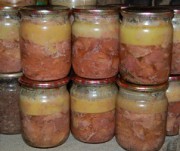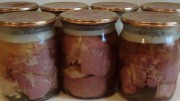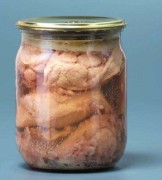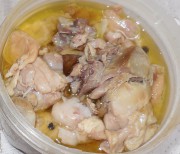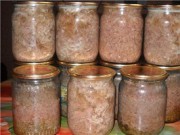How to cook goulash for the winter - a simple recipe for preparing meat for future use.
Late autumn and winter are a great time to prepare meat for future use. The homemade recipe is simple: fry fresh meat and place it in jars. We do without sterilization, because... Fill the workpiece with melted lard. So, in essence, we have ready-made canned goulash, from which, opening at any time, you can quickly make a tasty dish.
How to cook goulash for future use at home.
Take any fresh meat you like. Cut the pork or beef into pieces measuring 3 by 3 cm and add a little more salt than usual.
Place them on a large flat platter with one side resting on a cutting board. This is necessary to drain excess moisture from the meat. Keep the meat in this condition for 8 hours - during this time the pieces will even dry out a little.
Melt a lot of lard to a boil in a deep, wide saucepan and dip the meat pieces into it.
When the meat is well browned on all sides, transfer it to liter, pre-sterilized jars.
Pour the boiling lard in which it was fried over the meat. When pouring fat into the meat, add 3-4 black peppercorns to each jar. Make sure that the goulash is completely covered with lard.
Cut out circles from thick cellophane, which should completely coincide in size with the opening of the jar. Place cellophane directly on the fat - it will prevent contact of meat products with air.
Cover the jars with plastic lids and wrap parchment paper soaked in vodka on top. You can replace the parchment with cellophane, but secure both with a strong thread. To better preserve meat fried without sterilization, wrap the jars in dark paper and store them in a fairly cool place.
Canned meat without sterilization will give you the opportunity to make delicious goulash without unnecessary hassle and with a minimum amount of time. And if you heat the preparation in a saucepan and add stewed vegetables to it, you will get a very satisfying and tasty second course.

